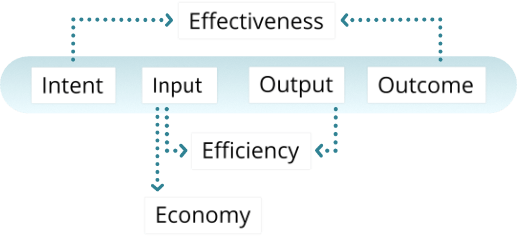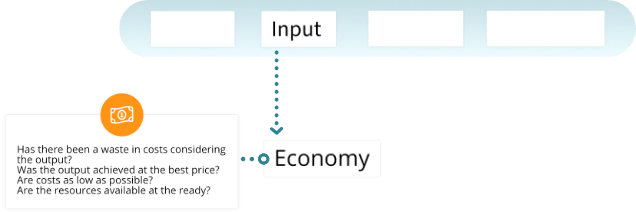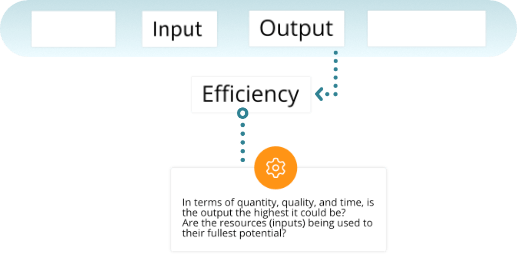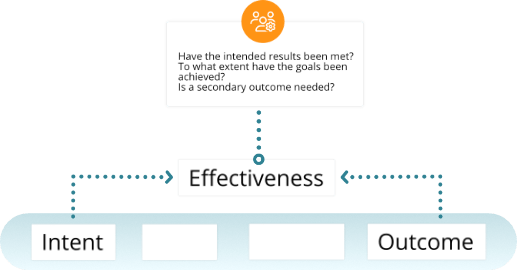Performance Audits - Definition, Framework, & Examples

What are Performance Audits?
Performance audits are one of the main three auditing types (the others being compliance and financial).
The data from a performance audit provides valuable insights into areas that need development, these areas are not yet known to the business. Hence, the introduction of conducting a performance audit to provide constructive outcomes to improve the auditing matter.
They typically follow the 3Es model to ensure full coverage so that the outcome is effectively achieved based on outlined intent, work completed is efficient, and costs are as low as possible without impacting the quality or quantity.
The Typical Performance Audit Path
A performance audit will typically follow 4 stages the intent, input, output, and outcome.
Intent
The intent is simply the objective. What are the goals? The depth of your input will depend on the auditing scope.
Input
The input is the resources being allocated; this can include assets, locations, and people. You�re looking at what the business already has and how resources can be distributed to ensure the intent is achieved.
Output
The output states the quantitative (numerical) results from the input.
Outcome
The outcome states a less tangible, qualitative (interpretation) version of the output which can also outline goals for a secondary outcome. In other words, what is the intent behind achieving a different output based on the original goal?
What the 3Es Are and How They Work Individually in Relation to the Audit Path
With the audit path defined, each stage needs to be assessed against certain criteria, hence the introduction of the 3 Es.
The 3 Es is a framework that focuses on effectiveness, efficiency, and the business� economy, forcing the audit matter to be measured under a specific lens so that the business can grow through optimised performance.

Economy

Minimising to the lowest possible cost, based on resources, without sacrificing quality, quantity, or unnecessary time.
This element focuses on how the audit performed in reducing the input�s cost. And if resources were available when needed in preparation of the project timespan so the resources do not impede the progress.
- Has there been any waste, and can this be reduced (quantity) without sacrificing quality within the output?
- Was the output achieved at the best price? Some key components include people, assets, and controls.
- Are the costs as low as possible?
- Are the resources available at the ready?
Efficiency

Utilising available resources, the input, and evaluating their efficiency based on the output's deliverance on time, quality, and quantity.
Efficiency is the assessment of the direct correlation between the inputs and outputs. Heavily assessing the utilisation of the resources and whether they were put to optimal use based on the results.
- In terms of quantity, quality, and time, is the output the highest it could be?
- Are the resources (inputs) being used to their fullest potential?
Effectiveness

The measurement of success within the organisation�s policies and procedures, comparing the goals (intent) of the business to the actual outcome.
Reviewing the effectiveness of the policies and procedures that drive the business.
- Have the intended results been met?
- To what extent have the goals been achieved?
- Is a secondary outcome needed?
How Do the 3Es Work Collectively to Drive Performance?
As part of the auditing matter, you may look to focus on just the economy, efficiency, or effectiveness of your performance audit; however, this can cause inaccuracies.
For instance, looking at the effectiveness in isolation could lead to an effective procedure, but it could cost the company masses; diverting from the opportunity to implement something cost-effective.
Alternatively, you may have a low-cost procedure that doesn�t help the business in any real way, wasting valuable resources.
In all, performance audits aim to assess multiple areas and how they work together to achieve an intended output, if individually evaluated, you won�t know where the business is making a loss.
To fully understand the workings of each stage in a performance audit, let�s explore a mock example to highlight a business� need to improve its asset management.
Intent
The goal is to increase the lifespan of assets with ongoing audits to assess the condition of assets and issue replacement parts, ensuring usability when needed for onsite jobs; saving operatives time in having to source assets from other sites.
Overall, decrease procedure costs by implementing a better solution to track and manage assets. They�ll measure the effectiveness of the new procedure within the outcome, comparing it to their intentions.
Input
Resource-wise, they eliminated the need for paper, reinvesting the costs into an automated solution that manages their assets through digital forms, instantly notifying those qualified via approval workflows to reinstate an asset.
Compared to the cost of paper, this would have a positive impact on the business� economy, while also improving the quality of data, reducing time waste, and ultimately providing the business with a higher quantity of resources.
Output
With the ability to fill out forms via the operatives� devices, the resource was at the ready; meaning no time was unnecessarily spent in printing and sending forms back to the office.
When compared to the input, the operatives were saving over 60% of their time. And, due to the automation, tasks were being completed in due time, rectifying assets before they were needed, leaving a 70% reduction in needing to source assets in an emergency.
Operatives were efficiently achieving the goals stated in the input with no extended efforts.
Outcome
Overall, the business deduced that based on their intent, they were effective in reducing the risk of an asset being useless in the field.
How to Increase the Success of Your Performance Audits
Now you�re up to speed with performance audits and how they work, contact our paperless experts to find out how Culverdocs can streamline your paper-based operations using an easy-to-use mobile app.

